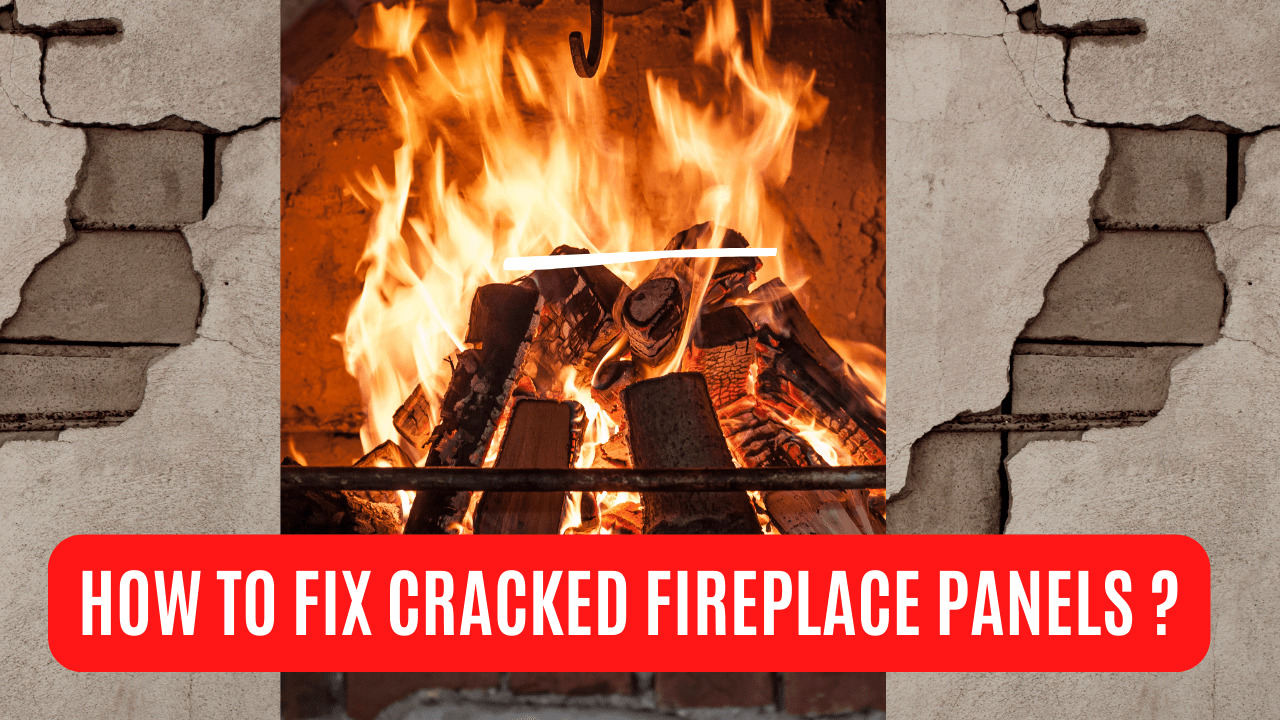If you suspect that your fireplace refractory is cracked, you should address it as soon as possible. If you put off taking care of your refractory, you risk starting a fire in your home. The firebox of a masonry fireplace is built out of firebrick. A prefabricated metal fireplace’s firebox is lined with refractory brick panels.
You may be comfortable that when the fine cracks appear, the homeowner will be able to enjoy the fireplace without fear. A factory-built fireplace has metal behind the refractory, so the fireplace will continue to function safely even if the cracks grow larger.
Table of Contents
What Are The Main Reasons For Cracks In Fireplace Panels?
The heating and cooling of a panel, which causes it to expand and contract, is one of the most prevalent causes of cracks, particularly hairline ones. Hairline cracks may emerge if this process occurs repeatedly.
Excessive heat from an incorrect fire in the firebox region might shatter or destroy panels. The fire may have been built too large or improperly positioned in the fireplace, exposing the panels to too much heat.
Thermal shock can break a hot panel if someone throws water into a fireplace to put out a few lingering embers. Occasionally, a batch of panels fails to cure correctly or is dropped or knocked at the manufacturing. It’s possible that these won’t crack until they’re installed or exposed to fire.
Examine Your Fireplace To Find Out Cracks
Check whether the fireplace manufacturer has any instructions regarding cracks and the refractory fireplace panels before evaluating a crack to assess its severity. Some fireplace experts believe that if a crack is less than typical or if you can’t put a dime into it, it might be fine or that a limited repair would be prudent.
When a panel has large cracks, multiple cracks, or parts of the panel are missing or damaged; the panel should be replaced. The panels can sometimes be fixed.
When Do You Need To Replace Fireplace Panels?
When major fractures appear in the refractory, it is time to consider replacing it. Replace the refractory if it begins to disintegrate and fall apart in chunks. On a factory-built fireplace, refractory replacement is a very simple procedure that usually entails unscrewing a bracket, removing the original refractory, and replacing it with a new panel.
Repairing a masonry fireplace is more complex and expensive because experienced brick masons must use special materials to mend the fractures. Assembled fireplaces can now be found in almost every home. The bottom and sides of the firebox are lined with factory-made fireplace panels.
These panels are designed to resist the extreme heat of the fire while also giving the fireplace strength and durability. Whenever you use the fireplace, cracks in the refractory panels pose a danger. The flames could enter the walls or ignite combustible objects within the firebox if even the tiniest cracks exist, putting your property at risk.
Replacing The Cracked Fireplace Panel Is The Best Decision
Replace a prefabricated metal fireplace panel with a new one if it develops large cracks or begins to disintegrate. Most DIYers will be able to complete this project. Loosen the screws holding the old panel in place and replace it with the new one, which should fit snugly against the other panels.
Remove the side panels first while replacing the rear panel. Because the corners are constructed to fit snugly against each other, refractory mortar is not usually required. Make a note of the fireplace’s make and model number to make finding a replacement panel easier.
Give this information to the manufacturer or a dealer who specializes in installation. Although new panels are frequently available, a special order may be necessary, which can take anywhere from a few days to a few weeks. Do not use the fireplace until it has been fully repaired.
How To Prevent Cracking Issues In Fireplace Panels?
To avoid the problem in the first place, the homeowner should use the assembled panels in a new fireplace by starting with modest fires and progressively increasing to larger fires. When putting wood on the fire, don’t hurl logs into the firebox since this could harm the back refractory.
Because it is subjected to the most heat and log impact, the back refractory nearly always displays the most symptoms of wear and strain. Side refractory panels are rarely required to be replaced. You’re probably aware that the panels expand and contract as the fireplace heats and cool.
This is very normal. Little hairline fractures are likewise not a cause for concern inside the panels, and you can safely use your fireplace. When the cracks in the refractory panels become too much to bear, the hairlines cracks expand.
Bottom Line
It’s bad news if your fireplace refractory is cracked. The good news is that replacing it is relatively simple. You also have the assurance that you are safeguarding your house and family against a potential fire hazard.
Factory-built fireplace refractory is a highly engineered product that, when treated with respect, will provide the homeowner with many years of trouble-free service.
It’s normal for little cracks to appear. It’s not a safety hazard if small cracks occur. When major fractures appear, refractory pieces begin to fall off, or if you want to modify the refractory for aesthetic reasons, consider changing it.





